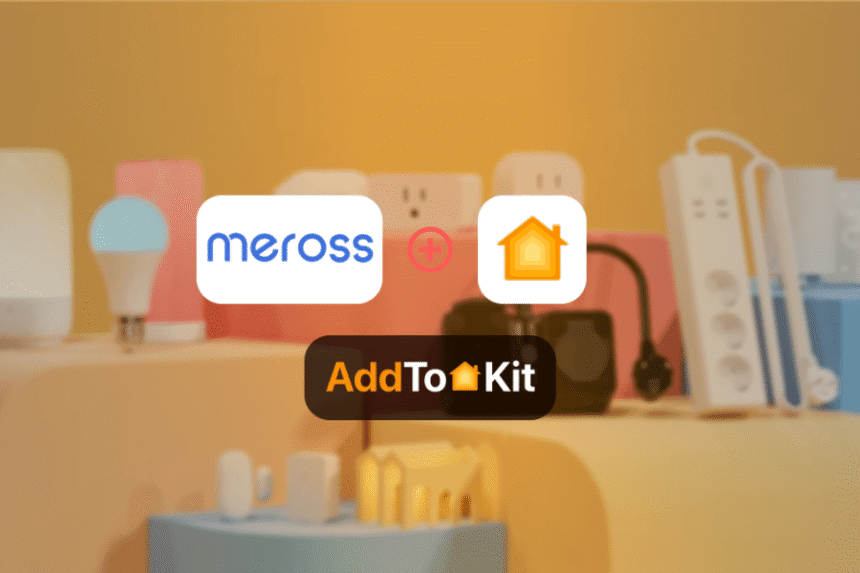Smart home technology has revolutionized the way we interact with our living spaces. As the market expands, two popular smart home ecosystems have emerged: Apple’s HomeKit Device vs Meross LAN mode. Both offer unique features, but which one is the best choice for your smart home setup? In this post, we’ll take a closer look at HomeKit devices and Meross LAN mode, comparing their compatibility, performance, and privacy features to help you make an informed decision.
Understanding HomeKit: The Apple Ecosystem for Smart Homes
Apple HomeKit is a leading smart home platform that allows users to control a wide range of compatible devices through their Apple devices, such as iPhones, iPads, and Apple Watches. HomeKit is known for its tight integration with Apple’s ecosystem, making it an appealing choice for those who already use Apple products. The HomeKit ecosystem includes smart lighting, thermostats, smart plugs, cameras, and more, all designed to work seamlessly together.
HomeKit has become synonymous with convenience and security. One of its standout features is the ability to control devices using Siri, Apple’s voice assistant. For instance, you can say, “Hey Siri, turn off the lights,” and Siri will automatically control your HomeKit-enabled lights. Additionally, HomeKit supports secure remote access, meaning you can control your devices even when you’re away from home.
Apple’s focus on privacy is also a major selling point for HomeKit. With the platform, your data is encrypted and stored locally on your devices, ensuring your smart home information remains secure.
Exploring Meross LAN Mode: Local Control for Faster Performance
Meross, a popular brand in the smart home market, offers a range of budget-friendly devices, including smart plugs, switches, and cameras. One of Meross’s key features is its LAN mode, which allows users to control their Meross devices locally, without relying on cloud servers. This local control results in faster response times and ensures that your data doesn’t need to travel through the cloud, which can be a privacy concern.
Meross LAN mode is an excellent feature for those who value privacy and security. By relying on your local network, it reduces the risk of data breaches that can occur when using cloud-based solutions. Meross LAN mode also provides users with greater control over their devices, as the devices operate directly over your home’s Wi-Fi network rather than through an external server.
Meross’s devices are compatible with popular voice assistants like Alexa and Google Assistant, making it easy to integrate them into existing smart home setups. However, they do not offer the same level of seamless integration as HomeKit, particularly if you are already embedded in the Apple ecosystem.
HomeKit Device vs Meross LAN Mode: Performance Comparison
One of the key factors in choosing between HomeKit Device vs Meross LAN mode is the performance of each platform. Both have their strengths and weaknesses, depending on what you’re looking for in your smart home setup.
Response Time:
HomeKit devices rely on Apple’s cloud services for remote control and automation. While Apple’s cloud infrastructure is generally reliable, there can be delays in response time when controlling devices remotely. For instance, when you ask Siri to turn off the lights, there might be a slight lag, especially if you’re controlling devices remotely when you’re away from home.
In contrast, Meross LAN mode offers local control, meaning there are no delays caused by cloud connectivity. Devices controlled through Meross LAN mode are faster because they operate directly over your home’s Wi-Fi network, allowing for quicker response times.
Control and Automation:
HomeKit offers an array of advanced automation features. You can set up scenarios where your smart lights turn on when you arrive home or your thermostat adjusts when the temperature drops. HomeKit’s automation capabilities integrate well with other Apple apps like Home and Shortcuts, allowing users to create customized workflows.
Meross LAN mode doesn’t offer the same level of complex automation that HomeKit provides. While Meross supports basic routines and schedules through its app, it’s not as comprehensive or as tightly integrated as HomeKit’s automation.
Integration with Other Smart Devices:
HomeKit supports a wide range of smart home devices, from lights to security cameras and smart locks. The seamless integration between these devices makes HomeKit a powerful platform for those who want a cohesive smart home system.
Meross, while offering a variety of smart home devices, isn’t as widely supported as HomeKit. However, Meross works well with other platforms like Amazon Alexa and Google Assistant, meaning you can still control your devices using voice commands. But if you’re looking for the complete integration that comes with HomeKit, Meross may feel like a bit of a compromise.
Privacy and Security: What Sets HomeKit and Meross Apart?
Privacy and security are major considerations when choosing smart home devices. Both Apple and Meross take privacy seriously, but their approaches are different.
HomeKit Security:
Apple has always emphasized user privacy, and HomeKit is no exception. All communication between HomeKit devices is encrypted, and Apple ensures that your data is stored securely on your devices, not in the cloud. This approach minimizes the risk of data breaches and protects your personal information. Additionally, Apple has implemented a strict vetting process for manufacturers who want to integrate their devices with HomeKit, ensuring that only secure and reliable devices are available to users.
Meross LAN Mode Security:
Meross’s LAN mode is a strong advantage when it comes to privacy and security. Because Meross devices can be controlled locally over your home’s Wi-Fi network, there is no need to send data through the cloud. This means there is less chance of third-party access to your data. However, Meross does rely on its cloud servers for remote access and certain functionalities, which could raise concerns for some users.
Which Smart Home Platform is Right for You?
Ultimately, the choice between HomeKit and Meross LAN mode depends on your specific needs and preferences.
- HomeKit is an excellent choice if you’re already embedded in the Apple ecosystem and want a seamless, integrated experience. It offers advanced automation, a wide range of compatible devices, and top-notch privacy features. However, it relies on cloud connectivity for remote control, which can lead to occasional delays.
- Meross LAN Mode is ideal if you value privacy, faster response times, and want to control your devices locally. While it may not offer the same level of integration and automation as HomeKit, it’s a budget-friendly option with solid performance.
In the end, both platforms offer great smart home solutions, but they cater to different needs. Whether you choose HomeKit or Meross LAN mode, you’re making an investment in the future of smart home technology.










